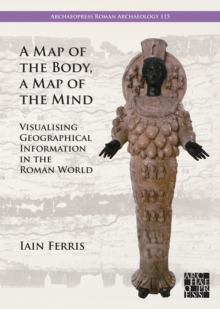
Landliche Siedlungsstrukturen im roemischen Spanien : Das Becken von Vera und das Camp de Tarragona -zwei Mikroregionen im Vergleich Paperback / softback
by Jan Schneider
Part of the Archaeopress Roman Archaeology series
Paperback / softback
Description
The present study deals with the comparison of rural settlements, aiming to compare developments in various settlements of the Iberian Peninsula during the Roman era.
This is to show to what extent structures in the hinterland show parallels or are different from one another and to explore the causes of these similarities and differences.
Aspects of the Roman economy must be taken into account as well as the micro-regional influences of pre-Roman settlement or topographical conditions.
To achieve this goal, various aspects of rural settlements such as the dating, size or status of a place and its location and environmental conditions are analyzed and related.
Archaeological, geographic and statistical methods of investigation are used.
These methods, along with the complete resulting data, are fully disclosed in order to allow the comparison to be extended to other regions.
The Vera basin and the Camp de Tarragona were chosen as study areas.
The former is located in the south-east of the Iberian Peninsula on the Spanish Mediterranean coast, and was seen in the Roman period as the hinterland of the city of Baria, today's Villaricos.
Also on the Mediterranean coast of Spain, but in the north, is Camp de Tarragona.
The name refers to the surrounding area of the Roman city of Tarraco, capital of the Hispania Tarraconensis province of the same name.
German Description: Die vorliegende Untersuchung beschaftigt sich mit dem Vergleich landlicher Siedlungsstrukturen.
Ziel der Arbeit ist es, die Entwicklungen in verschiedenen Siedlungskammern der Iberischen Halbinsel wahrend der roemischen Epoche einander gegenuberzustellen.
Dies soll zeigen, inwieweit Strukturen im Hinterland Parallelen aufweisen oder voneinander abweichen und worin die diese Gemeinsamkeiten und Unterschiede begrundet sind.
Dabei sind Aspekte des roemischen Wirtschaftswesens ebenso zu berucksichtigen, wie mikroregionale Einflusse der vorroemischen Besiedlung oder topographische Gegebenheiten.
Um dieses Ziel zu erreichen, werden verschiedene Aspekte landlicher Siedlungsstrukturen wie Datierung, Groesse oder Status eines Platzes und dessen Standort- und Umgebungsbedingungen analysiert und in Beziehung zueinander gesetzt.
Dabei kommen archaologische, geographische und statistische Untersuchungsmethoden zum Einsatz.
Diese werden ebenso wie samtliche Daten und Ergebnisse innerhalb der Arbeit vollstandig offengelegt, um eine Ausweitung des Vergleichs auf weitere Regionen zu ermoeglichen.
Als Untersuchungsgebiete wurden das Becken von Vera und das Camp de Tarragona ausgewahlt.
Ersteres liegt im Sudosten der Iberischen Halbinsel an der spanischen Mittelmeerkuste und war in roemischer Zeit als Hinterland der Stadt Baria, dem heutigen Villaricos, anzusehen.
Ebenfalls an der Mittelmeerkuste Spaniens, jedoch in dessen Norden, liegt das Camp de Tarragona.
Der Name bezeichnet das Umland der roemischen Stadt Tarraco, Hauptstadt der gleichnamigen Provinz Hispania Tarraconensis.
Information
-
Out of Stock - We are unable to provide an estimated availability date for this product
- Format:Paperback / softback
- Pages:220 pages, Illustrated throughout in colour and black & white
- Publisher:Archaeopress
- Publication Date:13/03/2017
- Category:
- ISBN:9781784915544
Information
-
Out of Stock - We are unable to provide an estimated availability date for this product
- Format:Paperback / softback
- Pages:220 pages, Illustrated throughout in colour and black & white
- Publisher:Archaeopress
- Publication Date:13/03/2017
- Category:
- ISBN:9781784915544










